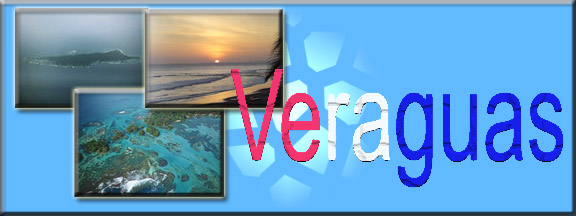
Creado en el año 1991, el Parque Nacional Coiba constituye por su extensión y por la riqueza de sus islas y de las aguas marinas que las rodean una de las joyas naturales de Panamá. Protege ecosistemas marinos, insulares y costeros.
 Se han censado 1,450 especies de plantas vasculares con la presencia de abundantes ejemplares de ceiba (Ceiba pentandra), panamá (Sterculia apetala), sepavé (Anacardium excelsum), tangaré (Carapa guianensis) y cedro espino (Bombacopsis quinatum).
Se han censado 1,450 especies de plantas vasculares con la presencia de abundantes ejemplares de ceiba (Ceiba pentandra), panamá (Sterculia apetala), sepavé (Anacardium excelsum), tangaré (Carapa guianensis) y cedro espino (Bombacopsis quinatum).
Los mares de Coiba conocidos tradicionalmente por su abundante pesca albergan especies como el tiburón ballena (Rhincodon typus), el tiburón tigre (Galeocerdo cuvier), la manta raya (Manta birostris), el dorado (Coriphaena hippurus) y la tuna de aleta amarilla (Thunnus albacahes). Los mares de Coiba son también el hábitat de cuatro especies de cetáceos: la enorme ballena jorobada o yubarta (Megaptera novaeangliae), la orca (Orcinus orca), el delfín moteado tropical (Stenella attenuata) y el delfín mular (Tursiops truncatus).
.jpg)
Created in the year 1991, the National Park Coiba constitutes for his(her,your) extension and for the wealth(richness) of his(her,your) islands and of the marine waters that them surround one of the natural jewels with Panama. It(he,she) protects aquatic, insular and coastal ecosystems. The major one of these islands of volcanic origin is Coiba, which with 50,314 hectares is the biggest island of the country. Together with her(it) the islands Jicarón (2,002 it(he,she) has.), Jicarita (125 it(he,she) has.), Channel of Out (240 it(he,she) has.), Afuerita (27 it(he,she) has.), Birds (45 it(he,she) has.), Grape (257 it(he,she) has.), Brincanco (330 it(he,she) has.), Coibita (242 it(he,she) has.) ... and others many(many people) more form(train) 53, 582 hectares of insular territories.
There have been registered 1,450 species(kinds) of vascular plants(floors) by the presence of abundant copies(specimens) of ceiba (Ceiba pentandra), panama hat (without petals Sterculia), sepavé (Anacardium excelsum), tangaré (Carapa guianensis) and cedar hawthorn (Bombacopsis quinatum).
Coiba's seas known traditionally by his(her,your) abundant fishing shelter species(kinds) as the shark whale (Rhincodon typus), the shark tiger (Galeocerdo cuvier), the blanket borders (Blanket birostris), the gilding (Coriphaena hippurus) and the tuna of yellow fin (Thunnus albacahes). Coiba's seas are also the habitat of four species(kinds) of cetacean: the enormous hunchbacked whale or yubarta (Megaptera novaeangliae), the killer whale (Orcinus killer whale), the flecked tropical dolphin (Stenella attenuata) and the of mules dolphin (Tursiops truncatus).

No hay comentarios:
Publicar un comentario